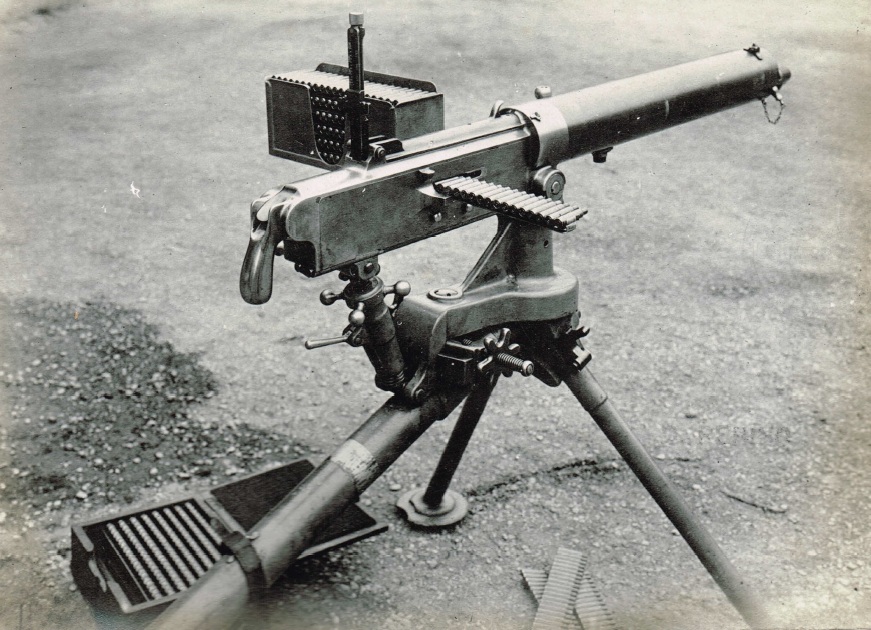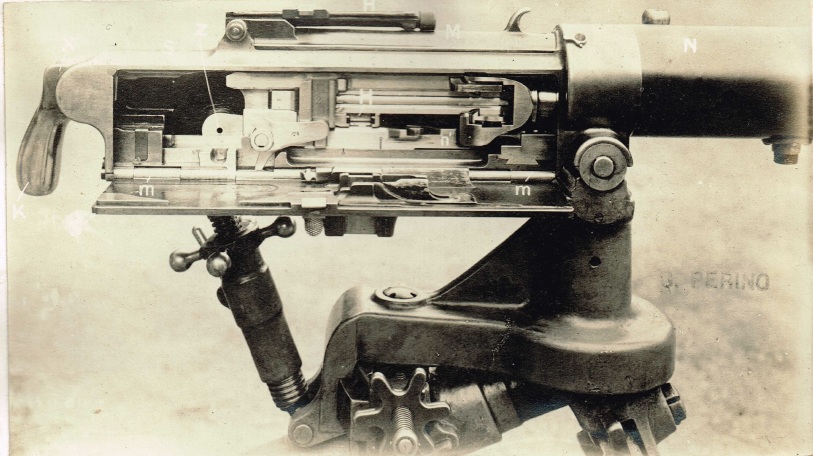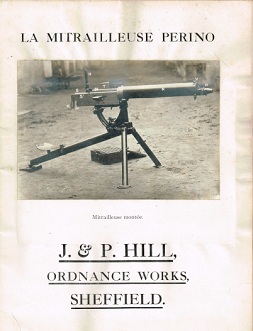The Perino is a gun that really should have been adopted, but wasn’t. Its development began in 1901 when Giuseppe Perino (an Italian Army officer) patented the design for a recoil-operated machine gun with a novel twist. The Perino gun fed from 20-round feed strips (like a Hotchkiss), but instead of ejecting empty cases out of the gun, it replaced them in the feed strip as it was fed through the action (this concept would reappear a few decades later in the M37 Breda machine gun). When all 20 rounds were fired, the feed strip fell out the right side of the gun filled with all the empty cases. The idea behind this feature was to prevent spent casings from hitting troops and getting underfoot.

The Perino could mount a box on the left side of the receiver which held 5 loaded feed strips, pulling the bottom one in to use when firing. This made it simple for the assistant gunner to keep the weapon topped off by simply adding loaded strips to the top of the ammo box as the gun was firing. Between this and its water jacket to keep the barrel cool, the Perino theoretically could fire more continuously than any other gun available in its day (even a long ammo belt must be changed sooner or later in a Maxim).

Unfortunately for Perino, his gun was deemed Top Secret by the Italian government, to prevent its perceived advantages from being copied. The government slowly tested and developed the gun, including a successful trial against the Maxim in 1908. However, because of its secrecy it never participated in large-scale open trials and was thus never really perfected. When WWI broke out in 1914, the Perino lost out to the Fiat-Revelli machine gun, because Fiat was willing and able to put their gun into mass production immediately. A pity for the Italian soldiers who would have to use it, because I think the Perino would have been a significantly better weapon.
Manuals:


On the contrary, from what I’ve read the insertion of the empty casings into the strip added unnecessary complexity and meant there was more that could go wrong in the feeding; if the casing wasn’t reinserted perfectly in line, it would jam up. Not to mention that you’d need to pry all the empty casings out of the feed strip to refill them with loose ammo.
Theoritically you would only reload the strips after an engagement ended, but remained easy enough to do in combat.